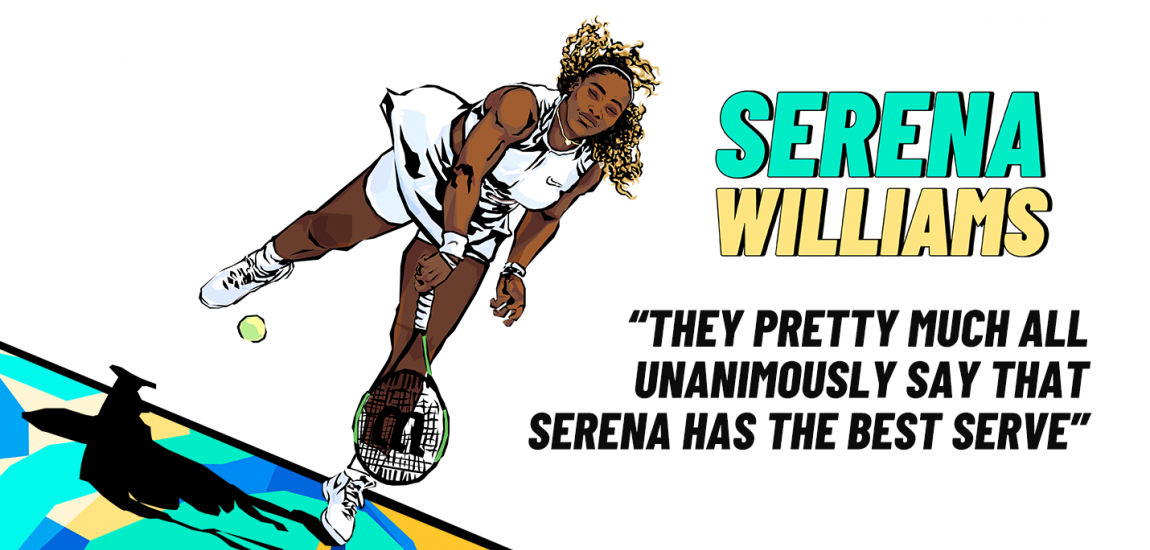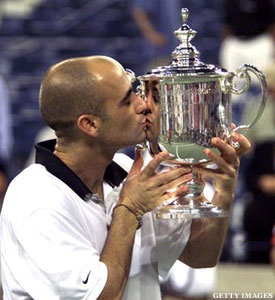
Andre Agassi's career was known for producing the unexpected. He went from world No. 1 to No. 141 back to No. 1. He went from marrying a famous actress to a former tennis star. He took a three-year hiatus from Wimbledon to protest the all-white dress code.
But one thing was for certain. When the end of August came around, Agassi would be in Flushing Meadows, playing in the U.S. Open. From 1986 to 2006, Agassi made every trip to New York City. From age 16 to 36, it was where he grew up.
"The U.S. Open is the only Grand Slam I never missed in all 21 years because it meant that much to me," Agassi says in an exclusive interview with ThePostGame. "I'm 'hell or high water' that I find a way to get out there and give the New Yorkers everything I have because they not only watched me grow up, I believe they were very instrumental in my development."
Agassi's legacy at the Billie Jean King National Tennis Center, which includes two championships, six finals and ten semifinals, will be honored before the men's singles final Sunday. Agassi will become the 22nd member of the U.S. Open Court of Champions, a recognition that includes a monument.
Agassi was selected by a panel of print and broadcast journalists from the "roster of U.S. champions based on their performances at their tournament and their impact on the growth of the event," according to the U.S. Open website.
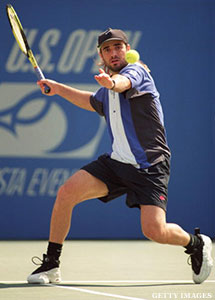
A student of the game, Agassi is honored to be in the company of some of history's greatest stars, including his wife of nearly 11 years, Stefanie Graf. The distinction allows Agassi to put some perspective on his tennis career.
"You get to a place in life where you end a significant chapter, and on a daily basis you're sort of hit with realities of what you've put yourself through, the uniqueness of the life," he says.
He acknowledges he had some luck, but he also made the most of it, saying he found "the right team around me that gave me the platform I needed. You start to really realize how special and rare these things are, and for it to be you is a very humbling feeling."
During his 21 appearances in Queens, Agassi brought a whirlwind of emotions and gave the New Yorkers a list of moments to remember. There was Agassi's 1994 championship run as the first unseeded player to ever win the U.S. Open. There was his 1999 five-set title victory over Todd Martin. There was the series of nail-biters Agassi played against longtime rival and fellow American Pete Sampras. There was his comeback from two sets down against James Blake in the 2005 quarterfinals at age 35.
And that is just to name a few.
With so many U.S. Open plotlines traveling with Agassi in the back of his mind, it is difficult for the eight-time Grand Slam title winner to choose his most memorable moment.
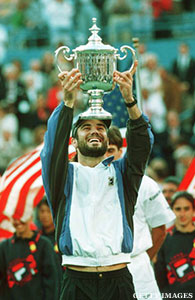
"They're all so alive," he says. "It just depends which day I think about it, quite frankly. My last match there, me saying good-bye, jumps to my mind now going back and being honored. That's the first memory that comes to mind if you're asking me today, but you ask me another day and it's playing those four tiebreaks with Pete, and before we start the fourth tiebreak, the crowd goes from their feet and they don't stop applauding. It was a very disruptive three minutes in a four-hour match, but every hair on your body stood up because you had to recognize that this was an incredible moment and I'll never forget that feeling."
The particular match against Sampras was the 2001 quarterfinals. Agassi and Sampras battled for over three and a half hours under the lights of Arthur Ashe Stadium in a match featuring four tiebreakers in four sets. In the 48 games played, serve was held 48 times. Sampras converted the final tiebreak point to win one of the more epic all-American matches in U.S. Open history. Agassi and Sampras fittingly finished their rivalry in the 2002 U.S. Open final, a Sampras victory in the final match of his career.
Not even the four-tiebreaker match can be clear-cut in Agassi's mind above the rest, but he has some obvious tournaments to remember: "I'll never forget my first U.S. Open," he says of his 1986 first-round victory over Brit Jeremy Bates. To put that in perspective, 2011 U.S. Open champion Novak Djokovic did not enter the world until nine months after Agassi's first U.S. Open appearance.
Another memory that jumps out in Agassi's mind is his final win at the U.S. Open in 2006, a five-set thriller versus Marcos Baghdatis of Cyprus. Agassi, unranked, battled extreme back pains, while the eighth-seeded Baghdatis fought muscle cramps. With both men clearly pushing their physical limits, Agassi prevailed with a boost from the New York crowd.

"I'll never forget the match against Baghdatis and just what that battle turned into," he says. "Sitting under the stadium, I talked about it in my book, in the bowels of Arthur Ashe Stadium, me laying on bags of ice and him cramping up.
"I'll never forget lying there literally holding hands. We reached out and kind of shook hands again because above us a TV was replaying the highlights of this battle. You almost couldn't believe that those two people we were watching were us. You're kind of hit with this bizarre out of body experience. There's so many memories that jump to my mind. It depends what day you ask me."
Perhaps fittingly, at the same U.S. Open where Agassi will be honored, Andy Roddick recently experienced the most emotional good-bye tour in Flushing Meadows since Agassi's. Roddick, the 2003 U.S. Open champion, never missed the event in the 13 years from his first appearance in 2000. Like his mentor, Agassi, Roddick grew up under the lights of Arthur Ashe Stadium in front of the New York faithful.
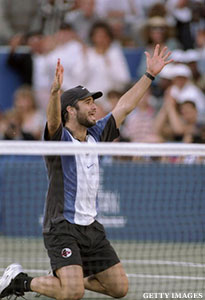
Agassi believes Roddick picked up where Agassi left off as the best American hope at the U.S. Open. He feels Roddick, who won just one Grand Slam, was judged by a "spoiled" American fan base, which had seen the likes of Agassi, Sampras, John McEnroe and Jimmy Connors before him. Roddick played as well as he could as the top American player of his generation, but he was constantly judged against the star-studded era of tennis he lived in. Roger Federer, Rafael Nadal and Novak Djokovic, Roddick's chief rivals, may very well be the greatest three players to ever play tennis. Agassi believes Roddick got caught in an unfortunate chapter in tennis history.
Off the court, Roddick has hinted at another parallel to Agassi's retirement. The 30-year-old says he plans to engage in philanthropic work after his tennis career, and he hopes to play an active role in his own fund.
As with American tennis, Agassi has set the bar high for Roddick. In 1994, Agassi founded the Andre Agassi Foundation for Education, which has raised $177 million. Agassi also founded the Andre Agassi College Preparatory Academy in 2001, a public charter school for at-risk children grades K-12 in Las Vegas.
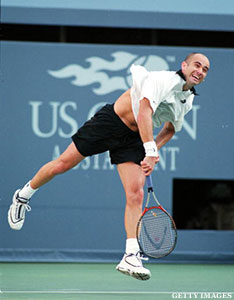
"The foundation is my heart and soul," Agassi says. "It's my life's work. It's my future."
After nearly 20 years working with educational philanthropy, Agassi is in the process of his most effective project. He is helping build more public charter schools across the country.
"The frustration with my foundation has been not the difficulty in doing what's been done, but in the kids I couldn't help," he says. "After 15 years of living in the educational space, I've realized that I'm not an operator, I'm not an educator, but I'm one darn good facilitator and my goal is to figure out how to facilitate more growth for those that know how to do what it is I'm doing here."
Agassi is working with Canyon Capital, a partner in Southern California, on a business model to erect more charter schools. According to Agassi, the project has more than $500 million to deploy nationally. Nine charter schools are currently in the process of being established, and Agassi hopes to increase to 25 to 30 schools in 2013-14 and 75 schools down the road.
"We think we can go back for round two with our investors when we prove this, that we're not only creating fair return for what our objectives are, that we're not just taking their money because philanthropy ends when philanthropists run out of money," Agassi says.
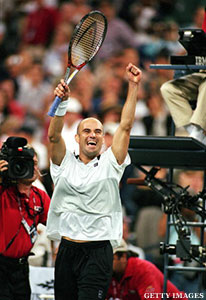
"We also prove ourselves educationally that we are only partnering with those that do the best work with our children. I think round two will double on ultimate and I think we'll have billions invested and we hope to build hundreds of thousands of seats across this country."
Agassi, who has challenged state and national policy in education, continues to show perseverance in raising money for education.
His dedication is reminiscent to that of the tennis player who fought the toughest battles and emotional roller coasters every summer in New York City. The boy who grew up before the nation's eyes; the man who grinded out his sport until his body would no longer let him.
On Sunday, Andre Agassi, U.S. Open champion, fervent philanthropist and American icon, will be eternally connected to the nation's premiere tennis event. His monument will stand among the greats to ever grace the U.S. Open courts.
If there is any guy who appreciates the honor and will not take it for granted, it's Andre Agassi.

